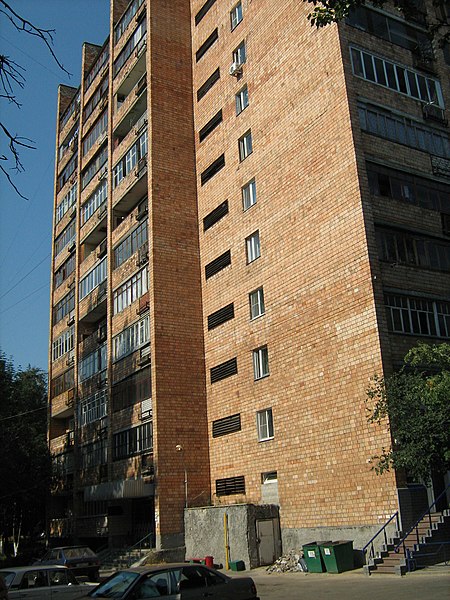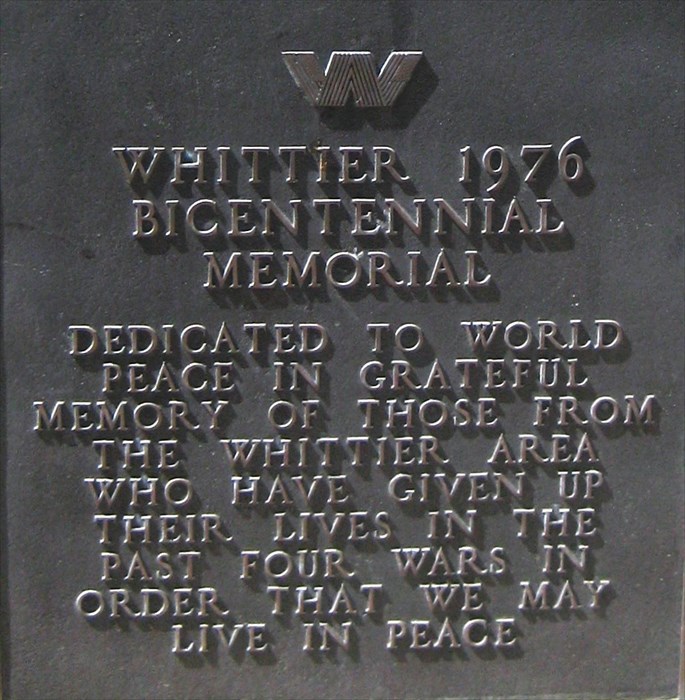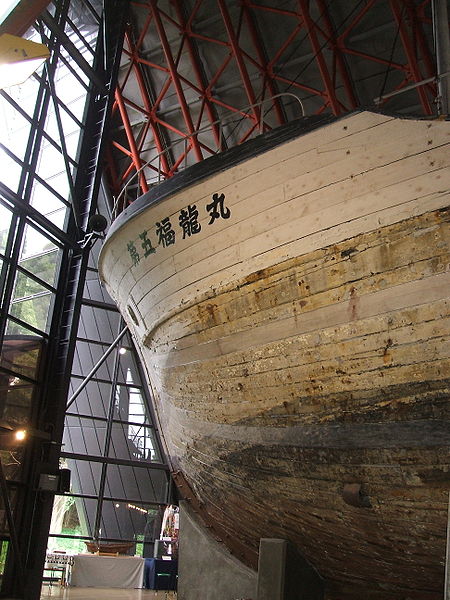


56 Peace Monuments
Dedicated in 1975-1979N.B.: Mother Teresa [1910-1997] received the 1979 Nobel Peace Prize.
Right click image to enlarge.
1975 (14 monuments)

T
O
W
E
RB
E
L
LApril 8, 1975 - Friendship Tower, Bagac (Philippines). Built by Rissho Kosei-kai of Japan as a sign of friendship and peace between the Philippines and Japan. Helps mark the places where the Bataan Death March started in 1942 (one in Bagac and the other in Mariveles). Dedication coincided with date on which Rissho Kosei-kai celebrates the birth of the Buddha Shakyamuni, founder of Buddhism.
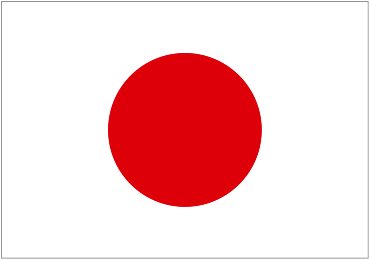

M
U
S
E
U
M1975 - Okinawa Prefectural Peace Memorial Museum, Peace Memorial Park, 614-Imabuni, Itoman, Okinawa (Japan). Relocated to new building in 2000. (Image shows the new building.) One of 9 Japanese institutions described in brochure for 6th International Conference of the INMP in 2008. Near the Cornerstone of Peace & other peace monuments. Click here for peace monuments in Okinawa.
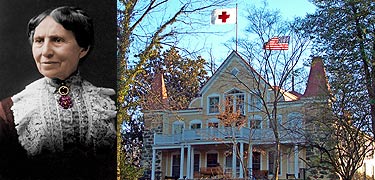
M
U
S
E
U
M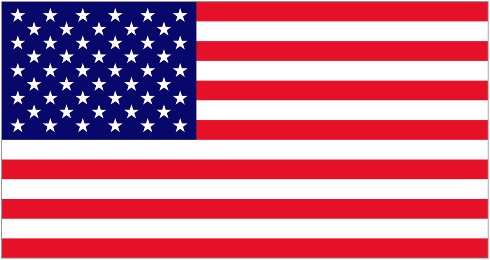
1975 - Clara Barton National Historic Site, National Park Service (NPS), 5801 Oxford Road (at MacArthur Boulevard), Glen Echo, Washington, DC (USA). The first National Historic Site dedicated to the accomplishments of a woman. A former Red Cross field hospital actually used by Clara Barton [1821-1912] for relief immediately following the Johnstown Flood on May 31, 1889. Barton lived here from 1897 until her death in 1912. NPS has restored eleven rooms, including Red Cross offices, parlors, and Miss Barton's bedroom. Visited by EWL.



1975 - Isaiah Wall, Ralph Bunche Park, East 43rd Street & First Avenue, New York City, New York (USA). Quotes Isaiah 2:4: "They shall beat their swords into plowshares." Shadow in image is cast by adjacent "Peace Form One." Ralph Bunche [1903-1971] received the 1950 Nobel Peace Prize. Entry #718 in the "Peace Movement Directory" by James Richard Bennett (2001).

B
O
A
T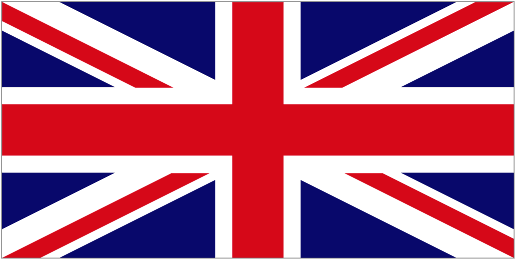
1975 - "M.V. Erasmus," Thames River, London (England). "Welcome aboard the newest vessel in our fleet. Built in Germany to a high specification, this modern vessel plied her trade in Holland for four years before entering service on the Thames [in 2002]. A light, airy and spacious boat on three levels, she offers superb views of the attractions and skyline of London. With a total capacity of 340, she is one of the largest boats on the Thames."
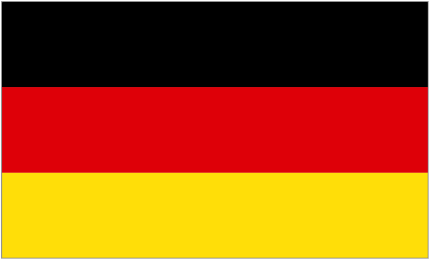

1975? - Apartment Building, Scherbinki neighborhood, Nizhny Novgorod, Volga-Vyatka economic region (Russia). Where A.D. Sakharov lived in exile 1980-85. His apartment is now a museum. Andrei Sakharov [1921-1989] received the 1975 Nobel Peace Prize.
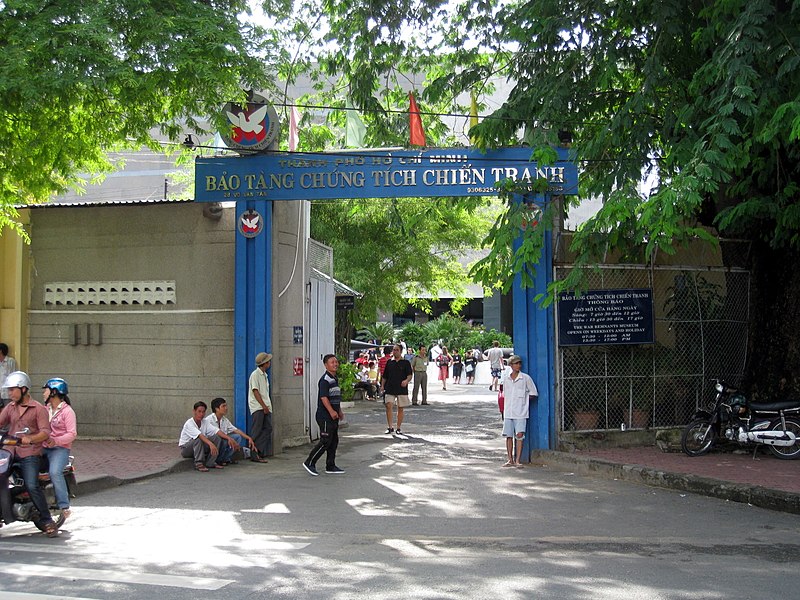
M
U
S
E
U
M1975 - Bao tang chung tích chien tranh / War Remnants Museum, 28 Vo Van Tan, District 3, Ho Chi Minh City/Saigon (Vietnam). Former premises of the US Information Service (USIS). Formerly called the Museum of American War Crimes. Primarily contains exhibits relating to the American phase of the Vietnam War. A major tourist attraction.

1975 - Peace Memorial, Linndale, Ohio (USA). Monument to war dead by Savo Savich. Inscribed "Through Knowledge Peace," "Peace to Mankind," and "Peace on Earth." At time of dedication, Linndale's main street was renamed Avenue of Peace.




1975 - Statue of Mary Dyer, Friends Center, 1501 Cherry Street, Philadelphia, Pennsylvania (USA). "The Massachusetts legislature enacted a law that every Quaker in its jurisdiction should be banished on pain of death. Mary Dyer [c1611-1660] was hanged in May 1660 for re-entering that colony, rather than abandon the principles of freedom of speech and conscience." Original of this statue is is Boston, Massachusetts; another copy is in Richmond, Indiana.


1975 - Grave of Hannah Arendt, Bard College, Annandale-on- Hudson, New York (USA). Hannah Arendt [1906-1975] was an influential German-Jewish political theorist. In 1959, she became the first woman appointed to a full professorship at Princeton University. See died December 4, 1975, in New York City & was buried at Bard College where her husband taught for many years.



August 2, 1975 - Sumako Fukuda Poetry Memorial, near the Hypocenter, Nagasaki Peace Park, Nagasaki (Japan). "Sumako Fukuda, well-known for many poems condemning the inhumanity of the atomic bomb & appealing for lasting world peace, died in April 1974 at the age of 52 after a long struggle with the after-effects of the bomb. Inscribed with her poem 'To Love Life' from the collection entitled 'The Atomic Field.'"



August 6, 1975 - Peace Resource Center (PRC), Wilmington College of Ohio, Wilmington, Ohio (USA). "Has "the world's largest collection (outside of Japan) of reference materials related to the atomic bombings of Hiroshima & Nagasaki." Founded by Barbara Leonard Reynolds who also founded the World Friendship Center (WFC) in Hiroshima (Japan) in 1965. Entry #820 in the "Peace Movement Directory" by James Richard Bennett (2001). One of 27 US museums in "Museums for Peace Worldwide" edited by Kazuyo Yamane (2008).

November 1975 - Memorial Statue for Reconstruction of War Damage, Nagasaki Peace Park, Nagasaki (Japan).
1975? - Peace Bell?, Nagasaki Airport, Omura Bay, Nagasaki Prefecture (Japan). Western style bell in tower on airport terminal roof. Airport opened May 1, 1975.
1976 (10 monuments)
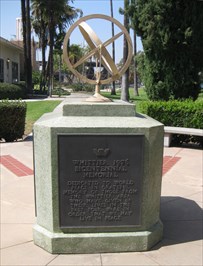



Memorial Day 1976 - Whittier Peace Memorial, Civic Center, Whittier, California (USA). " Inscribed: "Dedicated to world peace in grateful memory of those who have given up their lives in the past wars in order that we may live in peace." /// "This wording is consistent with the philosophy of Whittier’s first settlers, the Quakers, who did not believe in memorializing war, but who gave honor to those who fought in defense of others."/// "The names of 157 men who were killed, & two missing in action in Vietnam, are listed on 3 bronze plaques. The 4th plaque contains the dedication & Whittier Bicentennial logo. The sundial represents the world as a hollow sphere with the equatorial band parallel to the equator. Parallel to the axis of the earth and pointing to the North Star is the arrow, or gnomon, it casts a shadow on the equatorial band indicating the time and was designed to fit local time changes. The memorial was designed by the architect William H. Harrison."" /// "Renovated in 2010 and re-dedicated on November 11, 2010 (lower image), "in honor of those already named on the monument [residents who died in four wars in the last century: World War I, World War II, Korea & Vietnam] as well as those who have died in recent military action... A curving white wall highlights the Memorial, which will also be surrounded by flags--the US Flag, flags of all the branches of the American military groups and the POW Flag."


1976 - Vitrail de la paix / Peace Window, Chapelle des Cordeliers, Sarrebourg (France). Créé par Marc Chagall.

1976 - "United Nations Visit to Nashville" (historical marker), Nashville, Tennessee (USA). Text: "On June 7, 1976, 101 permanent representatives of the UN made a historic and unprecedented group visit to Nashville... [They] attended a forum at nearby Vanberbilt University, a special Tennessee luncheon in Centennial Park, and a special performance of the Grand Ole Opry. UN Secretary-General Kurt Waldheim was presented the Cordell Hull Peace award [sic]... Historical Commission of Metropolitan Nashville and Davidson County. No. 70. Erected 1976." Cordell Hull [1871-1955] received the Nobel Peace Prize in 1945. Click here for monuments related to Nobel Peace Prize laureates. Click here for monuments related to the United Nations.
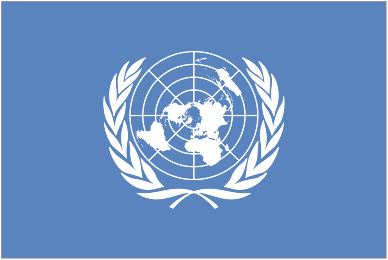

M
U
S
E
U
M1976 - Display House of the Daigo Fukuryu-Maru / Fifth Lucky Dragon, 3-2 Yumenoshima, Koto-ku, Tokyo (Japan). Displays the tuna fishing boat contaminated by the US hydrogen bomb test at Bikini Atoll on March 1, 1954.

H
O
U
S
EM
U
S
E
U
M
1976 - Ralph Bunche Peace & Heritage Center, South Los Angeles, California (USA). Boyhood home of Ralph Bunche [1903-1971] who received the 1950 Nobel Peace Prize. . Declared a Historic-Cultural Monument (HCM #159) in 1976 by the Los Angeles Cutural Heritage Commission and listed in the National Register of Historic Places in 1978.




1976 - Carilion Bell Tower, International Peace Garden, Dunseith, North Dakota (USA), and Boissevain, Manitoba (Canada). Constructed by North Dakota veterans as a US Bicentennial project. Contains bells made in England in 1932 but not donated to the Peace Garden until 1969.


1976 - Monument for Sojourner Truth, Stockade Historic District, Kingston, Ulster County, New York (USA). "A marker honoring the life of Sojourner Truth [c1797-1883] stands on the front lawn of the Ulster County Courthouse." Sojourner Truth [c1797-1883] was an African-American abolitionist & women's rights activist who was born into slavery in Swartekill (near Kingston), Ulster County, New York, but escaped with her infant daughter to freedom in 1826.
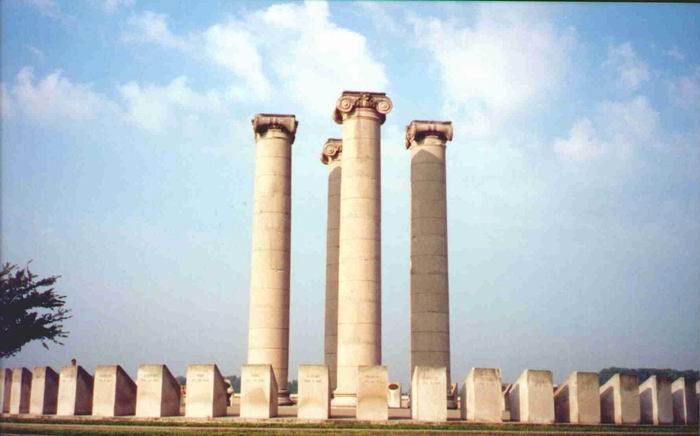


1976 - Four Freedoms Monument, Sunset Park, Ohio River, Evansville, Indiana (USA). Next to "Japanese Pagoda" (qv). Designed by local engineer Rupert Condict. Has four columns from former E&TH Depot (right image) plus separate stones for each of the 50 states. President Franklin D. Roosevelt [1882-1945] announced the Four Freedoms on January 6, 1941




October 3, 1976 - Korean Bell of Friendship, Angel's Gate Recreation Center, 3601 South Gaffey Street, San Pedro, California (USA). Near Los Angeles (whose sister city in Korea is Pusan). Gift from Korea to the people of the USA for the US bicentennial. Entry #80 in the "Peace Movement Directory" by James Richard Bennett (2001).
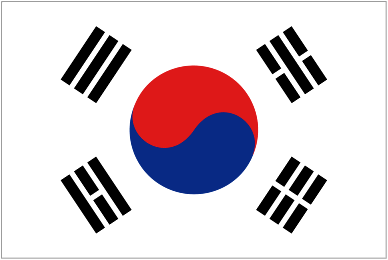



1976 - Yamaki Bonsai, National Bonsai & Penjing Museum, National Arboretum, Washington, DC (USA). "Japanese white pine (Pinus parvifolia). Donated as a sign of friendship from Japan. Represents peace between Japan & the USA... Donated by bonsai master Masaru Yamaki. Part of a 53-specimen gift to the USA for its 1976 bicentennial. Little was known about the tree until March 8, 2001, when - with no advance notice - two brothers visiting from Japan showed up at the museum to check on their grandfather’s tree... One of the things that makes it so special is [that] somebody has attended to that tree every day since 1625... When the atomic bomb dropped in Hiroshima on Aug. 6, 1945, Yamaki and his family were inside their home less than 2 miles away from the explosion. The devastating event killed around 140,000 people, but Yamaki and his family survived largely unhurt, with only some minor injuries from flying glass fragments. Sitting just outside of their house, in a walled nursery, the bonsai tree stood, unharmed."

1977 (10 monuments)
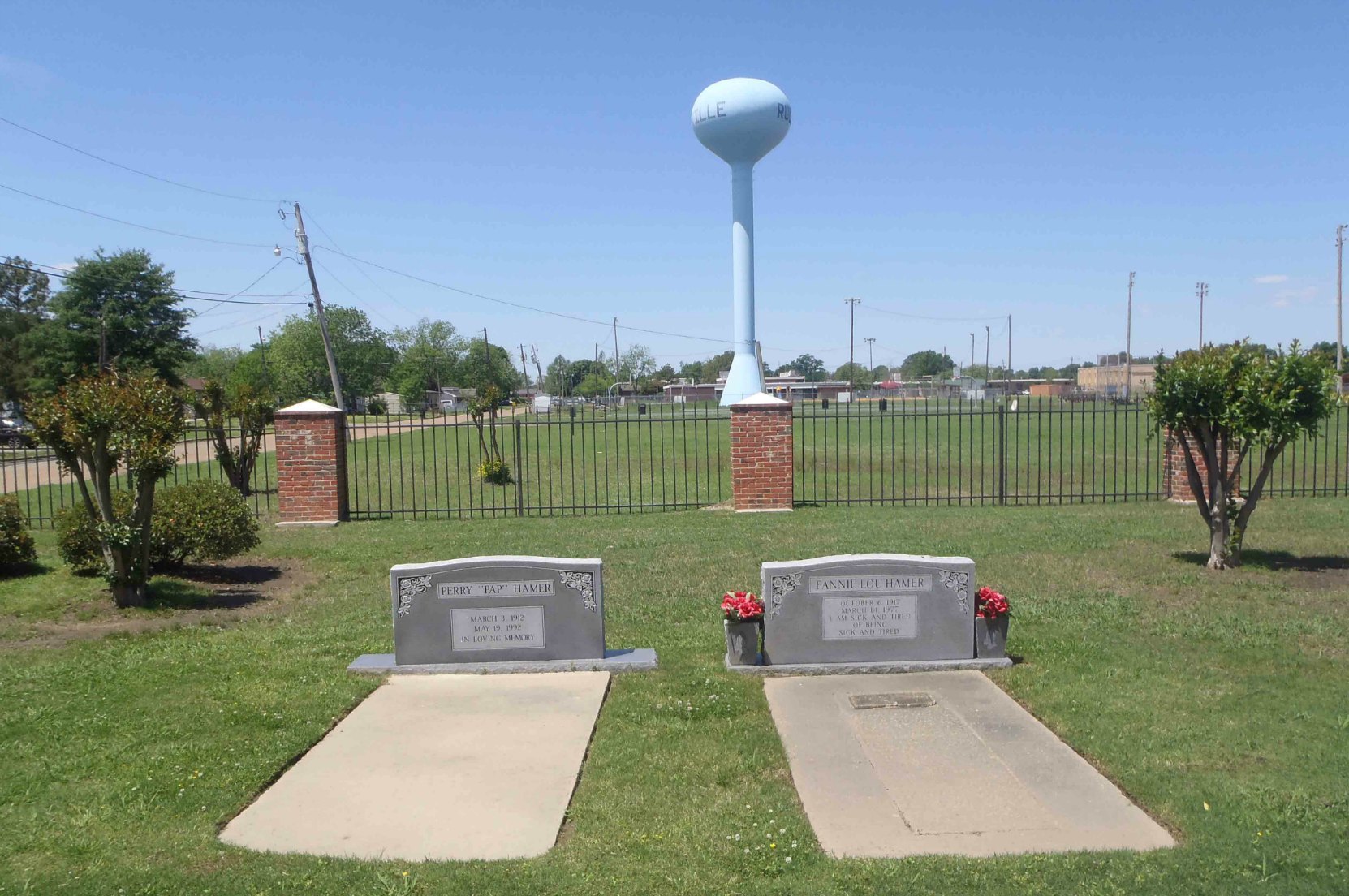

After March 14, 1977 - Grave of Fannie Lou Hamer, Ruleville, Mississippi (USA). Fannie Lou Hamer [1917-1977] was was an American voting rights activist and civil rights leader. Tombstone engraved "I am sick and tired of being sick and tired."

After March 14, 1977 - Statue of Fannie Lou Hamer, Fannie Lou Hamer Memorial Garden, 726 Byron Street, Ruleville, Mississippi (USA). Fannie Lou Hamer [1917-1977] was was an American voting rights activist & civil rights leader. Famous for saying "I am sick and tired of being sick and tired." at 1964 Democratic national convention in Atlantic City.


May 4, 1977 - "Reconcilation,", J.B. Priestley Library, University of Bradford, Bradford (England). Original statue by Josefina de Vasconcellos [1903-2004]. Unveiled by 1974 Nobel Peace Prize laureate Seán MacBride [1904-1988]. Originally called "Reunion." Click here for air view. Four copies (paid for by Sir Richard Branson) are in Belfast, Berlin, Coventry & Hiroshima (qv).
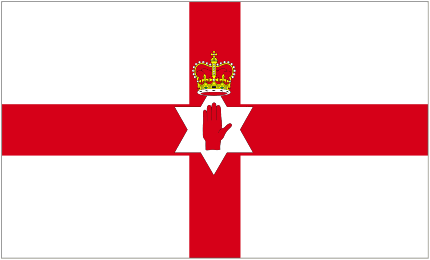

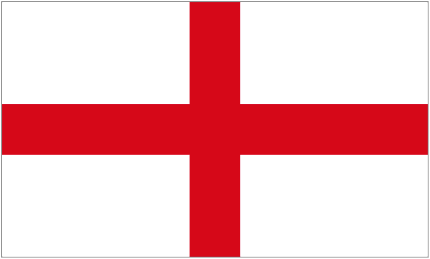


1977 - 13-cent stamp commemorating "Peace Bridge 1927-77." Fiftieth anniversary of the Peace Bridge between Buffalo, New York (USA), and Port Erie, Ontario (Canada).

1977 - 12-cent stamp commemorating "Peace Bridge 1927-77." Fiftieth anniversary of the Peace Bridge between Buffalo, New York (USA), and Port Erie, Ontario (Canada).
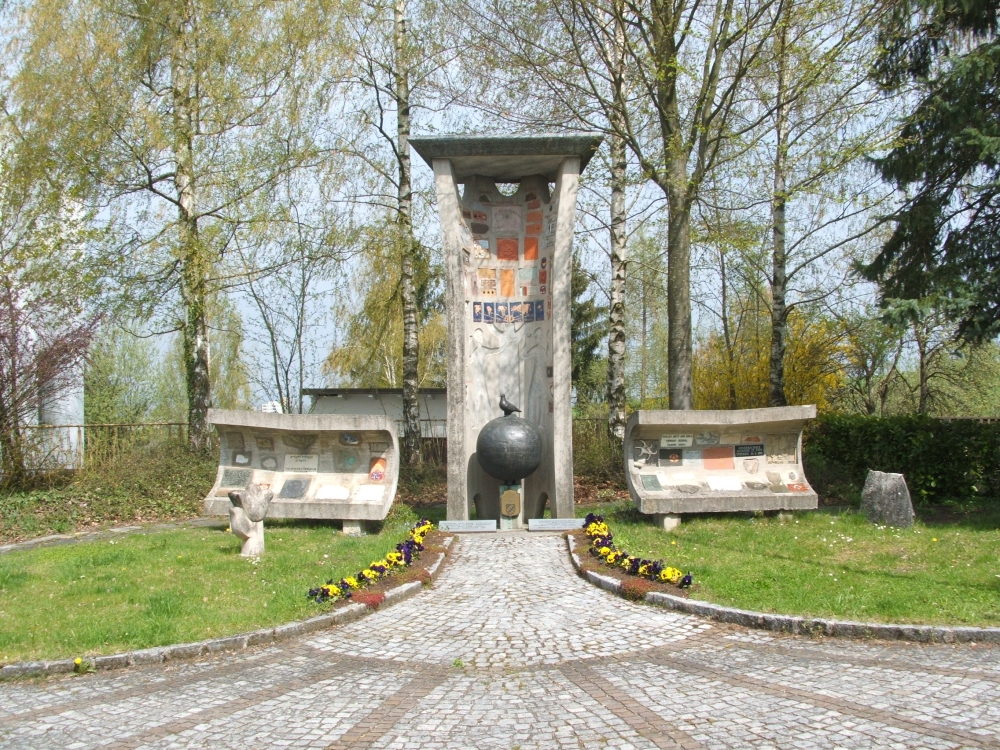

1977 - Peace Monument, Sankt Ulrich (Austria). "Austria's First Peace Monument. On the occasion of St. Ulricher Kulturtage 1977 the first peace monument in Austria was built in Ortisei. From 70 countries of the world, building blocks were sent. The sculptor Prof. Alois Dorn shaped the building blocks to a four-and-a-half-meter-high, narrow column. All stones were poured into them, so that the semicircular inner wall shows the face of the stones. Furthermore a bronze world globe with a peace dove was introduced [Google translation]." One of 15 peace monuments found in July 2017 by Googling "Friedensdenkmal" or "Friedensmahnmal."

1977 - U Thant Island, East River, New York City, New York (USA). Opposite UN Headquarters. Smallest island in Manhattan & sanctuary for a small colony of Double-crested Cormorants. Unofficially named to honor former UN Secretry General U Thant [1909-1974] by "Peace Meditation," a group of UN employees who were followers of the guru Sri Chinmoy [1931-2007].


M
U
S
E
U
M1977 - Japan Peace Museum, Shiba 1-4-9, Minato-ku, Tokyo (Japan). Operted by the independent "Citizens' Campaign to Establish Peace Museums, Peace Rooms & Corners in Japan."

1977 - Kyoto University of Art & Design, 2-116 Uryuzan, Kitashirakawa, Sakyo-ku, Kyoto (Japan). "One of the largest art universities in Japan with 10,000 students enrolled... Has 'Peace Building by Art' as the academic philosophy." One of 3 institutions hosting 6th International Conference of the International Network of Museums for Peace (INMP) in October 2008. One of 9 Japanese institutions described in brochure for 6th International Conference of the INMP in 2008.


1977 - Martin Luther King, Jr., Memorial, Martin Luther King, Jr., Park, Near Best Street, Buffalo, New York (USA). Plaque reads: "I have a dream that one day this nation will rise up and live out the true meaning of its creed, 'We hold these truths to be self-evident that all men are created equal.' M.L.K. Jr. 1929-1968."


B
E
L
LJuly 1977 - Nagasaki Peace Bell, Hill of Yamazato, Nagasaki Peace Park, Nagasaki (Japan). Western style bell as from Urakami Cathedral which survived the A-bomb blast on August 9, 1945. "Erected...that we may pray for the repose of mobilzed students, willing obedient girls, forced laborer and A-bomb dead of the general public, and so that the cruel atomic bomb like that would not explode on this earth again."


1977 - "The Passage to Freedom," near Talbot Hall, Oberlin College, Oberlin, Ohio (USA). "Commemorates Oberlin as a major stop on the Underground Railroad, the secret route by which abolitionists helped slaves escape to freedom in the Civil War era. Cameron Armstrong (then a senior at Oberlin College) constructed the piece as part of a class art project."

T
R
E
EM
O
S
A
I
C
November 7, 1977 - Reformers Tree Memorial, North Section, Hyde Park, London (England). "Commemorate the Reformers Tree which was burnt down during the Reform League riots in 1866, after which the remaining stump became a notice board for political demonstration and a gathering point for Reform League meetings. On 7 November 1977 Prime Minister James Callaghan planted a new oak tree on the spot where the Reformers Tree was thought to have stood."
1978 (8 monuments)
June 25, 1978 - "The original gay pride flag flew in the San Francisco Gay Freedom Day Parade on June 25, 1978. It has been suggested that Gilbert Baker was inspired by Judy Garland's singing "Over the Rainbow" and the Stonewall riots that happened a few days after Garland's death. The flag also strongly resembles the ribbon colors of the WWI Victory Medal, though no connection is evidenced. Another suggestion for how the rainbow flag originated is that at college campuses during the 1960s, some people demonstrated for world peace by carrying a Flag of the Races (also called the Flag of the Human Race) with five horizontal stripes (from top to bottom they were red, black, brown, yellow, and white). Gilbert Baker is said to have gotten the idea for the rainbow flag from this flag in borrowing it from the Hippie movement of that time largely influenced by pioneering gay activist Allen Ginsberg. The flag consisted of eight stripes; Baker assigned specific meaning to each of the [eight] colors." /// Image shows six-color version popular since 1979.

April 4, 1978 - Befrielsen / Liberation, Upsalla (Sweden). "In a Medieval plaza facing the city’s university, artist Olof Hellström depicts two large fists removing rods from the ground, symbolizing Dr. Martin Luther King’s message that the best way to solve a problem is to remove the cause. Or perhaps it is two large hands breaking prison bars. It was dedicated in 1978 on the 10th anniversary of King’s assassination. The plaza was also renamed in his honor." This is "Monday's Monument" #129.


1978 - Globe Monument, Nordkapp / North Cape (Norway). "North Cape, at 71°10'21 of latitude is referred to as the northernmost point of Europe. The Globe is now the simbol of North Cape, attracting peole from all over the world. Where Europe ends the Arctic Ocean begins." See Children of the World monument nearby.
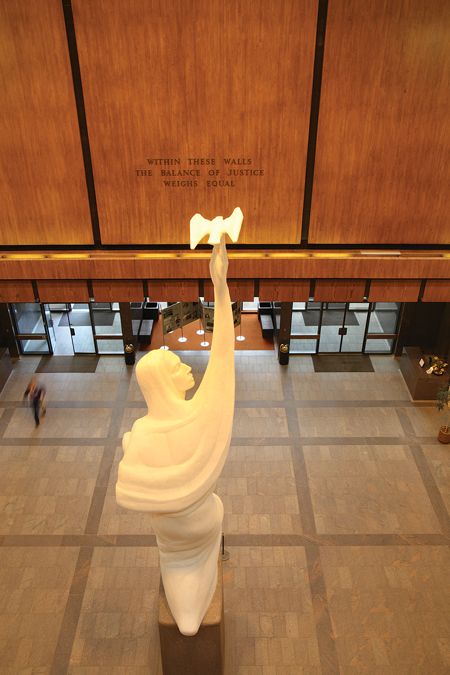


1978 - Statue of Justice, Lobby, Kansas Judicial Center, 301 SW 10th Avenue, Topeka, Kansas (USA). "An 8 Wonders of Kansas Art finalist because of the beauty of the 22-foot white marble statue designed by Bernard (Poco) Frazier [1906-1976] & because of the importance of its symbolic portrayal of justice as possessing clear vision & swift & accurate action."/// "Justice in Kansas is depicted as the compassion & sensitivity of a woman holding the powers of unrivaled vision & swift & accurate action, as evidenced by the sculpture 'Justice' in the atrium of the Judicial Center in Topeka. The gentle, kneeling posture of a woman is holding aloft a native Prairie Falcon, one of the swiftest birds known, whose vision is thought to be eight times more powerful than man's."



O
F
F
I
C
E
1978 - Peace Pentagon (Muste Building), A.J. Muste Memorial Institute, 339 Lafayette Street, New York City, New York (USA). Organized in 1974 to carry forward the commitment of A. J. Muste [1885-1967] to nonviolent radical change, the institute bought the "Peace Pentagon" office building in 1978 to provide a stable and affordable base for itself and other activist groups in New York City. Now in need of major repairs and in danger of being sold. Click here for "Save the Peace Pentagon." Visited by EWL 12Jun2014.

P
A
R
K1978 - Mitzpor Shalom / Vista of Peace Park, between : Zionism Avenue 112 & 2nd November Road, Haifa (Israel). "A beautiful, serene, and peaceful park with a fantastic view of Haifa and the bay. The first public sculpture garden in the world dedicated solely to the works of a woman sculptor. Sculptress Ursula Malbin [b.1917] created all 29 of the statues in the Peace Park as well as some in the Ein Hod artist village. Sculptures include ______, Cat Lady, Trilli & Susi galloping to Mongolia, Guitarist Anonymous, Trillian & boy-friend Anonymous (because his clothes are off).

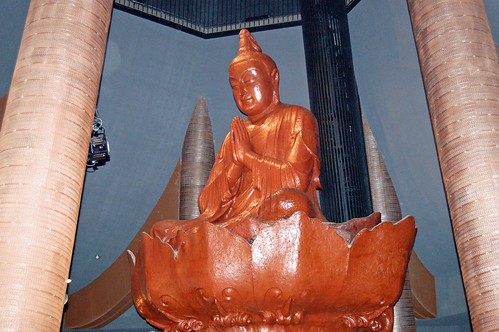
H
A
L
L1978 - Peace Memorial Hall, Mabuni Hill, Okinawa (Japan). "The hall houses the Prayer for Peace Buddhist statue, a series of 'War and Peace' paintings and the Sacred Stone Chamber. Local artist, Shinzan Yamada, spent 18 years to create the statue, which was inspired by his two sons who were killed in the Battle of Okinawa. The statue was created using a unique Okinawan lacquer-ware technique called Tsuikin. It is the largest 'Tsuikin' lacquer statue in the world. The Sacred Stone Chamber located under the statue, contains stones from various parts of Japan and other countries."


1978 - World Peace Symbols Zone, on both sides of Nagasaki Peace Park, Nagasaki (Japan). City of Nagasaki invited donations of monuments from countries round the world. Image shows monuments donated by the USSR (1985) the Czechoslovak Socialist Republic (1975) & the German Democratic Republic (1981).
The following monuments can now be seen in the World Peace Symbols Zone: * A 1975 "Joy of Life" from Czechoslovakia, (donated to Nagasaki in 1980). * B 1978 "Relief of Friendship" from Porto, Portugal (Nagasaki's sister city). * C 1980 "A Call" from Bulgaria. * D 1981 "Monument of People's Friendship" from the former German Democratic Republic. * E 1983 "Protection of Our Future" from the city of Middelburg, The Netherlands (Nagasaki's sister city). * F 1985 "Statue of Peace" from the former Union of Soviet Socialist Republics. * G 1985 "Maiden of Peace" from the People's Republic of China. * H 1986 "Flower of Love and Peace" from Poland. * I 1987 "Hymn to Life" from the City of Pistoia, Italy. * J 1988 "Sun Crane of Peace" from the Republic of Cuba. * K 1988 "Monument of Peace" from Santos, Brazil (Nagasaki's sister city). * L 1991 "Infinity" from Ankara, Republic of Turkey. * M 1992 "Constellation Earth" from St. Paul, Minnesota, USA (Nagasaki's sister city). * N 1996 "Triumph of Peace over War" from the City of San Isidro, Argentina,. * 2006 "Te Korowai Rangimarie - Cloak of Peace" from New Zealand.


October 1, 1978 - Okinawa Peace Bell, Peace Memorial Hall, Mabuni Hill, Okinawa (Japan). Donated by Lions International Club #337.
1979 (14 monuments)


1979 - North Saipan Korean Peace Memorial, Mount Marpi, Saipan Island (US Commonwealth of the Northern Mariana Islands). "Built in remembrance of all the Koreans forced into slavery & killed during World War II. Next to the memorial, you’ll find the last command post of the Japanese Imperial Army, known as Banadero, with World War II cannons, artillery & tanks preserved in a limestone cave. There’s also a concrete bunker there that still has the imprint from an American bombing. Stop at 800-foot Laderan Banadero (or 'Suicide Cliff'), where Japanese soldiers jumped to their deaths rather than surrendering to the Americans. Between Sabaneta Point & Lagua Katan Point, you’ll find Puntan Sabaneta (also known as 'Banzai Cliff'), where the Japanese fought their last battle & the remaining soldiers & their families jumped off the cliff."



1979 - Kluane-Wrangell-St. Elias-Glacier Bay-Tatshenshini-Alsek. This is a "transfrontalier park system" located at the borders of Yukon Territory (Canada), Alaska (USA) & British Columbia (Canada). It is declared a UNESCO World Heritage Site for the spectacular glacier and icefield landscapes as well as for the importance of grizzly bears, caribou and Dall sheep habitat. The total area of the site is over 32,000,000 acres (130,000 km²). Entry #1212 in the "Peace Movement Directory" by James Richard Bennett (2001).
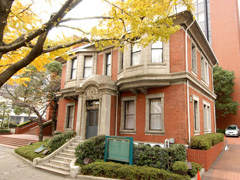
H
O
U
S
E1979 - Toda Peace Memorial Hall, Yamashita Park, Yokohama (Japan). "One of seven established across the country as part of Soka Gakki's effort to promote the message of peace in Japan." Named for Josai Toda [1900-1958]. House was originally constructed in 1922 for the British delegation to Japan.


1979 - "Dove of Peace," General Assembly Lobby, United Nations, New York City, New York (USA). Reproduction of a mosaic in the Constantinian Basilica of St. Peter in the Vatican City. Presented by Pope John Paul II. Entry #749 in the "Peace Movement Directory" by James Richard Bennett (2001). p://www.flags.net/images/largeflags/VACY0001.GIF" width="20" height="18" border="1">

H
O
U
S
E
1979 - Elihu Root House, Hamilton College, 101 College Hill Road, Clinton, New York (USA). Purchased by Root as a summer home in 1893. Named to the National Register of Historic Places and declared a National Historic Landmark in 1972, at which time it was still owned by Root's descendants. Root was affiliated with Hamilton College throughout his life. The house was acquired by Hamilton College in 1979. Elihu Root [1845-1937] received the 1912 Nobel Peace Prize.


H
O
U
SE1979 - Martin Buber House, Kreis Bergstraße, Heppenheim, Hessen (Germany). Inhabited by Martin Buber [1878-1965] & his family from 1916 until 1938 when they moved to Palestine. Contents destroyed during Crystalnacht. Became headquarters of International Council of Christians & Jews (ICCJ) in 1979.

1979 - "Offering of the Sacred Pipe," Albuquerque Museum, 2000 Mountain Road, NW, Albuquerque, New Mexico (USA). Monumental bronze by Native American artist Allan Houser [1914-1994]. "A stylized Native American Indian stands wearing a feather headdress & long robe. He extends his arms out in front of himself, offering a peace pipe with both hands." Duplicate of statues in Scottsdale, Arizona, & at US Mission to the United Nations in New York City (qv).



Date? - "Offering of the Sacred Pipe," Fitness Centre Patio, above the Centre for Well-Being Spa, The Phoenecian, 6000 East Camelback Road, Scottsdale, Arizona (USA). Monumental bronze by Native American artist Allan Houser [1914-1994]. Duplicate of statues in Albuquerque, New Mexico, & at US Mission to the United Nations, New York City (qv).
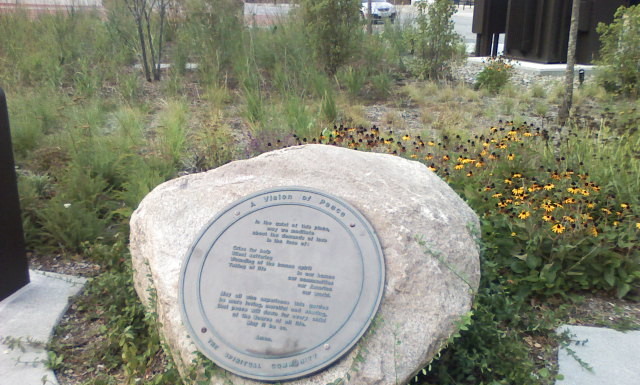


1979 - Improved in 2015 - Peace Rock, Cowles Commons, Third & Locust Streets, Des Moines, Iowa (USA). Part of "Peace Garden" in 1980. Survived transition from Nollen Plaza to Cowles Commons in 2015. Inscribed "A Vision of Peace...May all who experience this garden be more loving, merciful and sharing." Benches with these 10 peace quotations were added in 2015:
Helen Keller: “I do not want the peace that passeth understanding, I want the understanding which bringeth peace.”
John Lennon: “All we are saying is give peace a chance.”
Dorothy Day: “No one has a right to sit down and feel helpless, there’s too much to do.”
Chief Seattle: “Humankind has not woven the web of life. We are but one thread within it, whatever we do to the web, we do to ourselves. All things are bound together. All things connect.”
Martin Luther King, Jr.: “True peace is not merely the absence of tension, it is the presence of justice.”
Mother Theresa “If we have no peace, it is because we have forgotten that we belong to each other.”
Albert Einstein: “Peace cannot be kept by force. It can only be achieved by understanding.”
Walt Whitman: “Peace is always beautiful.”
Marlia (eighth grade): “If I could have three wishes, world peace would be all three.”
Mahatma Gandhi: “Be the change you wish to see in the world.”

M
U
S
E
U
M1979? - Memorial Museum of Mother Teresa, Feudal Tower (ground floor), Skopje (Macedonia). A building in which she used to play as a child. "More of a shrine than a museum, the one-room memorial dedicated to Skopje-born Mother Teresa has photographs, paintings, a model of her birth house and a prayer corner."
1979? - Mother Teresa Statue, Macedonia Street, Skopje (Macedonia). Just off the main plazza & 100 metres from the Memorial Museum (qv). Mother Teresa [1910-1997] received the 1979 Nobel Peace Prize.

1979? - Memorial plaque dedicated to Mother Teresa, Václavské Námestí Square, Olomouc (Czech Republic). Mother Teresa [1910-1997] received the 1979 Nobel Peace Prize.
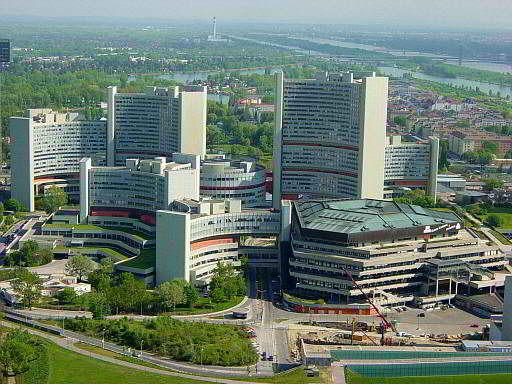
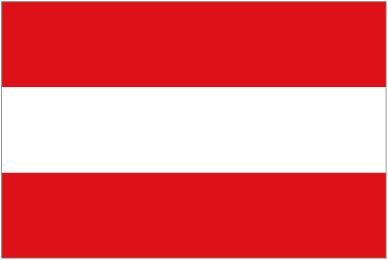
August 23, 1979 - Vienna International Centre (VIC), UN Office at Vienna (UNOV), Vienna (Austria). Includes headquarters of the International Atomic Energy Agency (IAEA) and the UN Industrial Development Organization (UNIDO), respectively in Vienna since 1957 and 1967.

September 8, 1979 - Monument to Dr. Marcel Junod, in front of Hiroshima Peace Memorial Museum, Hiroshima (Japan). Dr. Marcel Junod [1904-1961] of the International Committee of the Red Cross (ICRC) entered Hiroshima on September 8, 1945, and began treating survivors while carrying out studies of the damage. #29 of 56 "cenotaphs & monuments" on the Virtual E-Tour.

